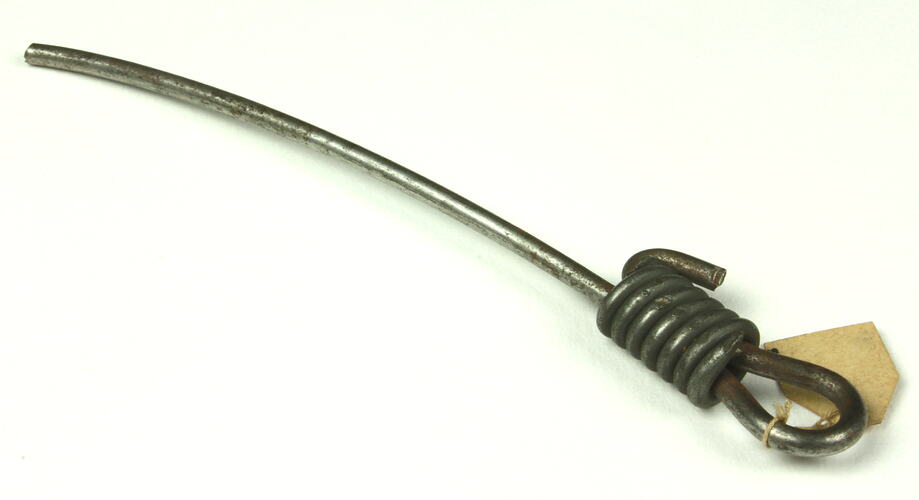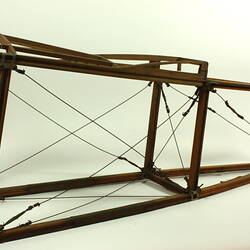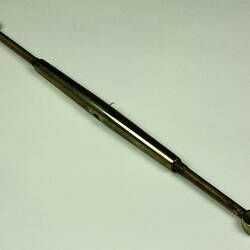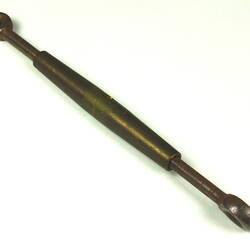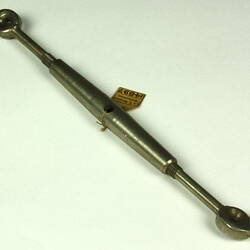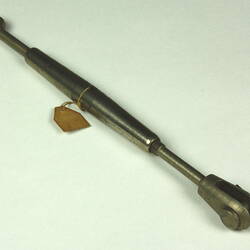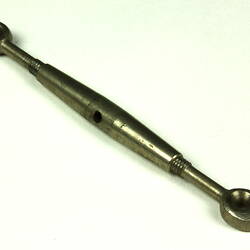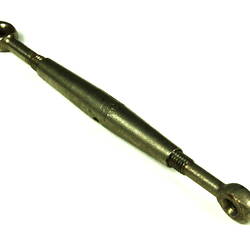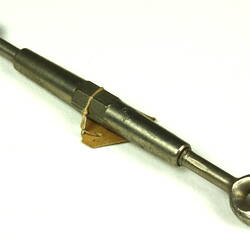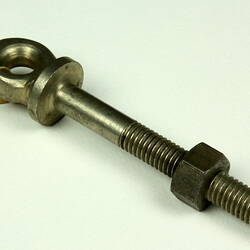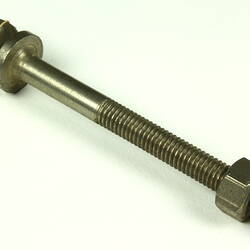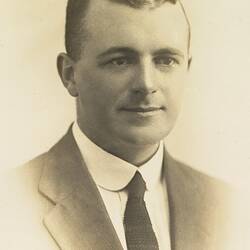Summary
Sample of steel bracing wire with twisted eye and collar, showing method used by for securing the diagonal stays to turnbuckles and other fixtures on the frame of the Sopwith type biplane built by the donor's son Basil Watson, in July-October 1916.
Basil Watson was first introduced to aviation by Harry Hawker during early 1914, and travelled to England with Hawker, where he worked as an engineer and test pilot with the Sopwith Aviation Company, and later the Imperial Army. He was severely injured in a crash following an engine failure on takeoff during a test flight in June 1915, and returned to Australia 12 months later, after being declared medically unfit for further military service. After constructing his own Sopwith type biplane from scratch in little more than 3 months, Watson piloted the aircraft on pioneering flights to Bendigo, western Victoria and Mount Gambier. He performed the first public aerial acrobatic flying demonstrations in Melbourne and many country towns and flew the first official airmail between Mt Gambier and Melbourne in February 1917. He was killed when a component of his aircraft failed during an aerobatic demonstration over Point Cook, Victoria, on 28th March 1917, causing the wings to collapse, plunging his aircraft into Port Phillip Bay. His death was the earliest recorded aviation fatality in Australia.
This twisted wire eye & collar is part of a group of related items donated to the museum by James Isaac Watson, in 1919. It is not known whether this particular component was recovered from the wreckage after the crash or was a sample part, however, it is identical in form to the method of securing steel bracing wires on the fuselage section from Basil Watson's biplane held by Museum Victoria (ST 014905), and in historical photographs of the aircraft.
Physical Description
Short length of steel aircraft bracing wire with twisted eye and collar used for securing ends to turnbuckle eyes or frame backet and other fixings.
More Information
-
Collection Names
-
Collecting Areas
-
Acquisition Information
Donation from James I. Watson, 28 Oct 1919
-
User
Mr Basil G. Watson, Victoria, Australia, 1916-1917
Believed to have been either made by or for Basil Watson for use as a component on his Sopwith-type biplane, built in 1916. -
Classification
-
Category
-
Discipline
-
Type of item
-
Keywords
Aeroplane Components, Aircraft, Aircraft Manufacture, Aviation, Aviation Pioneers, Biplanes, Fastenings, Wire Strainers, Wires
